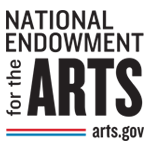Building Trust, Bridging Divides: Visual Communication/Branding Programming for the City of Long Beach Police Department and Community
- Public Policy
- Sustainable Development

Fall 2018
In collaboration with the Long Beach Police Department (LBPD) and supported by a grant from the National Endowment for the Arts (NEA), ArtCenter’s Designmatters and Graphic Design Departments hosted the Building Trust, Bridging Divides Studio which challenged transdisciplinary students to develop a visually compelling and technology-infused awareness campaign and branding program, to build understanding and empathy between the LBPD and the diverse communities of Long Beach.
Project Brief
Expanding on concepts developed at a one-day summer workshop with the LBPD and Long Beach community members, ArtCenter students, with Long Beach stakeholders, co-created effective transmedia communication tools and social innovative strategies for an awareness campaign to build empathy between the LBPD and the diverse communities of Long Beach they serve. The renewed positive perception would encourage more prospective local recruits to consider a career in law enforcement.

“I had never thought about recruiting this way and my mind is so stretched with the energy and concepts that these talented young people presented. I’m happy we were able to partner with ArtCenter and I am proud of my team; they are excited and willing to try new things. I think we are onto something here.”
– Robert Luna, Police Chief for the City of Long Beach
About Long Beach Police Department
The Long Beach Police Department (LBPD) is the second largest municipal police agency in Los Angeles County and provides law enforcement services to the seventh largest city in the state of California.
With more than 800 sworn officers and 1200 on staff, the LBPD serves one of the most diverse cities in the United States, where multicultural communities and neighborhoods make up the city’s 470,000 residents.
LBPD has an overall strategic vision to provide a safe city for all people with a mission of public safety through positive partnerships with the community. The department is committed to professional, proactive and innovative community policing.
Building trust and legitimacy between police and the communities they serve is an urgent need. According to the results of a 2015 report from the President’s Task Force on 21st Century Policing which recommends that integral tools–communication, technology and social media–must be better used in conjunction with improved policing, community engagement, and officer recruitment and training.
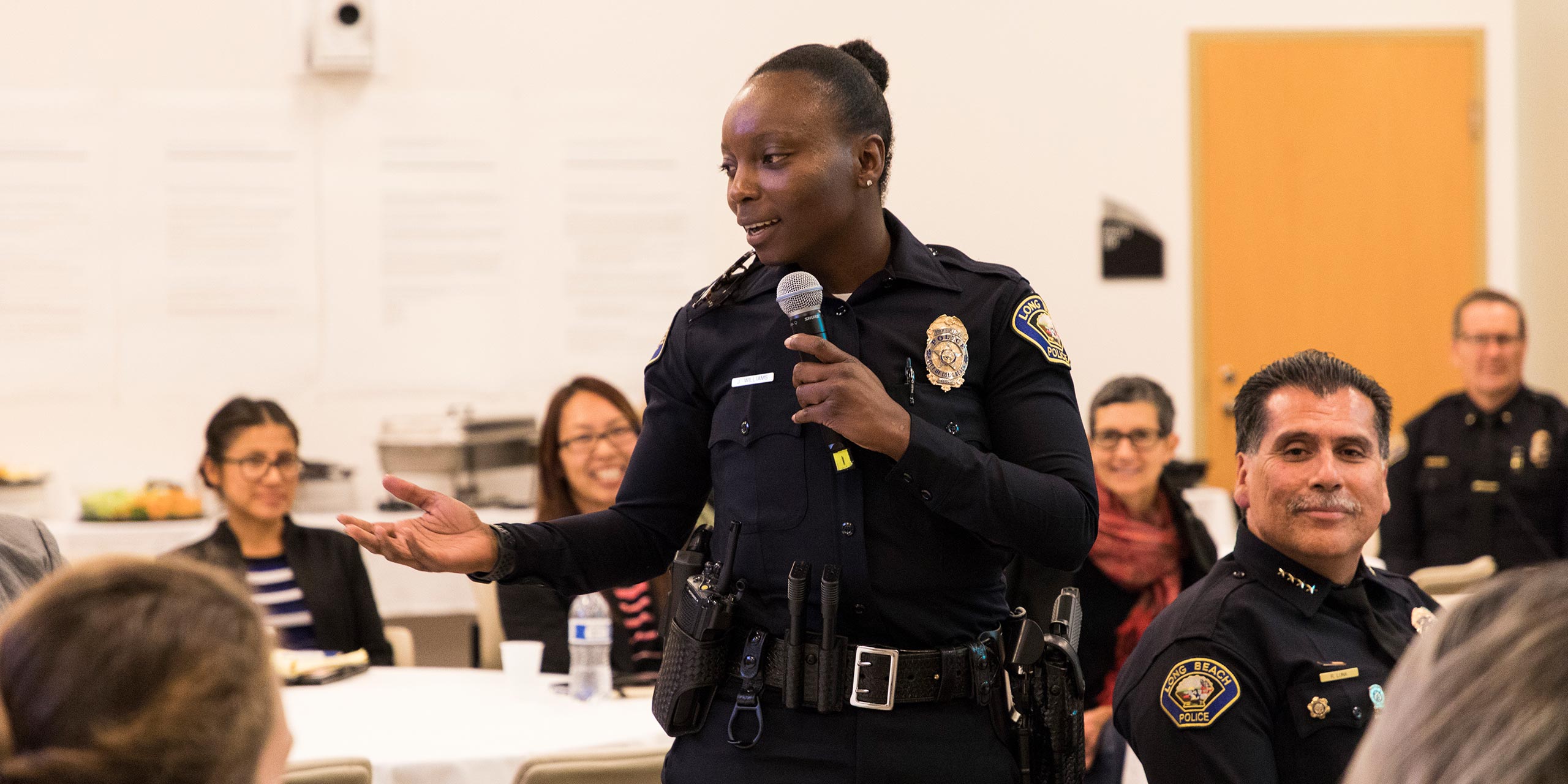
“This studio has been an amazing experience. The biggest challenge for us was the immersion; engaging with the Long Beach community for our research. That information became so important in our storytelling. It was very valuable to directly engage, to find out people’s opinions, and learn about their experiences with law enforcement. We learned how to approach in a calm manner, so as not to intimidate or scare off anyone. It was one of the most difficult aspects of the studio, but it taught me the most lessons. That information became so important in our storytelling, and it gave us a whole new perspective.”
– Alexandra Lebrun, Student, Graphic Design
Research And Project Development
This studio expands on an earlier one-day summer workshop that brought together
LBPD, ArtCenter students and faculty, along with support personnel, and community representatives. Held at the Long Beach Police Academy, the workshop introduced stakeholders to elements of the design process, while students got to see the human side behind the badge, and learned the challenges facing new recruits as well as understanding the culture of law enforcement. Through presentations, exercises and small group sharing, student/stakeholder teams targeted areas of opportunities and ideated themes and concepts that could be expanded at the fall studio.
From that initial groundwork, the fall studio’s kick-off invited representatives from the LBPD, and other civic and community stakeholders to once again share presentations, background information, and research findings with students and faculty. Afterward, students enthusiastically engaged with the partners, and asked specific and general questions to help clarify the scope, challenges and parameters of the project.
Students then entered into a rigorous research phase, using a “user-centered design” research method. The objective of this method was to ensure that the end design resonated authentically with the intended audience, in this case, the community of Long Beach. Using this method, students would collect extensive data, including attitudes, motivations, goals and concerns related to policing. Through interviews and observation, students would then form this data into models to continuously reference throughout the later design phases to help them during their design ideation and development processes.
Prior to beginning their interviewing and observation activities students were trained in a few foundational components of the user-centered design method, empathy, active listening, and asking non-bias questions. Knowing that the subject of policing can be a sensitive and charged topic, the students first learned engagement techniques, crafting questions free of inferred criticism by choosing neutral words and phrases.
Students learned that nuances in phrases and open-ended questions could provide more specific information. Questions included: “What does policing mean to you? What has been your experience? What do you want policing to be?” “Who should be a police officer?” “Do you know the steps it takes to become a police officer?” “What does a safe city look like?”
To help familiarize the students with the community framework, two panel discussion sessions presented a multifaceted portrait of the LBPD, and the local community’s relationship with the law enforcement agency.
At the Community Panel, students had a unique opportunity to interact one-on-one with leaders in the Long Beach area.
The Community Panel was comprised of:
Sandy Wedgeworth, Long Beach Health and Human Services
Joey Montalvo, Teacher, Long Beach Unified School District
James Hernandez, Chairman of Gems Uncovered, a Long Beach nonprofit dedicated to fighting human trafficking
Sayon Syprasoeuth, Program Coordinator, Living Arts Long Beach at the United Cambodian Community of Long Beach
Panelists shared how their organizations have engaged with LBPD in the past as well as their own personal interactions. Following the formal discussion, panelists met individually with student groups who probed deeper into the panelists’ opinions and personal experiences to learn how those events shaped their ideas on policing. Panelists had ample time to visit with every group individually. Students in each group listened attentively and took copious notes.
The students visited the Long Beach Police Headquarters to hear from a group of Long Beach Police with a range of experiences, from a new officer to a Lieutenant scheduled to retire the day after the panel.
The Long Beach Police Department panel included:
Lt. Mark Coble (now retired)
Detective Darlene Wigmore
Detective Chris Zamora
Officer Charles Pruiet
Officer Alexandra Romero
Officer Kaylie Lopez
Officer Jason Lehman (facilitator)
Administrator Karen Owens (facilitator)
Asst. Admin Analyst Virginia Zart (facilitator)
The panelists shared their experiences in recruitment, training and on the force, touching on their personal backgrounds and why they chose their profession. Panelists emphasized the close relationships they build with their fellow officers and their love for Long Beach. Students asked many questions about their days on the job, and their experiences interacting with the communities they serve. Students were also given a tour of the headquarters, and met with the Deputy Chief of Police, Wally Hebeish.
Additional guest lectures also informed the students as part of their research gathering. Students closely examined the resources and tools the LBPD already have in place for community engagement, in addition to discovering the strategies of successful communication programs for other civil service organizations.
Local Community Connections
Observational field research is a vital component of the studio, enabling students to venture outside of the classroom to interact with Long Beach community members about their attitudes, concerns, fears and personal experiences with policing. Engaging with community members, “on the streets” allow the students to develop empathy by internalizing personal stories that support a visceral connection to later drive authentic design solutioning.
Student teams began a series of cultural immersion excursions into the various ethnic and geographic communities of Long Beach. Visiting neighborhoods, they met people face-to-face. Their goal for each visit was to connect with a broad range of Long Beach community members including those of different backgrounds, ages and interests.
To help analyze the wealth of data, student groups were advised to create Pinterest Boards as visual interpretations of the research they were collecting. Teams shared their research findings with one another, noting commonality and patterns of thought and behavior.
A Stronger Connection
To finalize the research discovery phase, students then launched into another technique in the user-centered design process, modeling research data into multiple persona and scenarios.
With these techniques, students look for similarities in patterns of behaviors, attitudes, motivations and goals across their research participants. Using this aggregation of data, they create personas or characters to act as key players in future facing scenerios or stories that address and resolve—with innovative design solutions—the needs of the Long Beach community members.
Additionally, teams shared with one another their research findings, noting commonality and patterns of thought and behavior despite having met with vastly different community members.
Processing insights gleamed from the research data, student teams brainstormed ways to strengthen the relationship between the police and the diverse communities they serve. These “Blue Sky” concepts were broad and far-reaching, but also contained nuggets of possibility, and presented thematic elements that could be threaded into the final campaign.
Based on the research, the project focus shifted to a broader scope of rebranding the LBPD, moving away from the typical, formal, paramilitary-style visuals that most national law enforcement agencies choose to present themselves. While increasing recruitment is the ultimate goal for the LBPD, the students realized that creating a more positive connection between the residents and police officers would result in favorable attitudes toward law enforcement; this would naturally encourage young people to consider joining the ranks. The new vision would highlight the department and officers as inclusive and friendlier, while providing more transparency in policing, and strengthen personal connections to the neighborhoods they serve.
Students were encouraged to think about wearables, toolkits, event concepts, environmental interventions and other nontraditional solutions. Students explored alternative communication strategies and how emerging media could support their concepts.
By creating personas and scenarios, students imagined the tone and direction of their initial concepts; by reshaping and refining their ideas, students updated their personas and scenarios bringing focus and clarity into their ideation structure. Teams crafted storyboards which presented an understandable narrative that would address key elements of their concepts.
The scope and depth of these concepts were dependent on possible partnerships, whether local or national, that not only could assist financially with the campaign, but also become a keystone in creating increased trust.
At midterm, student teams shared their initial campaign concepts with the Long Beach stakeholders who offered concrete feedback to help students move forward. Students and police department staff discussed and analyzed the various concepts presented; honing the options to specific directions that seemed the most workable and effective.
Bolstered by the comments and suggestions, student teams then focused on strategies to develop simple concepts into full-blown, carefully crafted and detailed campaigns. Teams assigned responsibilities to members, drafted possible deliverables and outlined tasked needed to complete by the end of the studio.
One team was charged with creating branding features that would include various visual expressions such as iconography, text, logos, symbols, taglines, color palettes and image treatments. The other teams concentrated on incorporating those elements into events and experiences designed to strengthen the connection between police officers and civilians.
During this development phase, student teams refined messaging, created prototypes and considered how concepts could cross multiple platforms such as video, mobile, social media and 3D spatial.
Although it was a highly concentrated developmental design period, student teams took time to consider the ultimate objectives and referred back to the research they gathered, allowing them to reposition and refine their goals. The data ultimately kept the students on track, as their creativity continued to push the boundaries forward.
In the final weeks, students continued to test their prototypes, address problem areas, refine narratives and research possible partnerships, as they finalized campaign presentations and packaged together deliverables for the client.
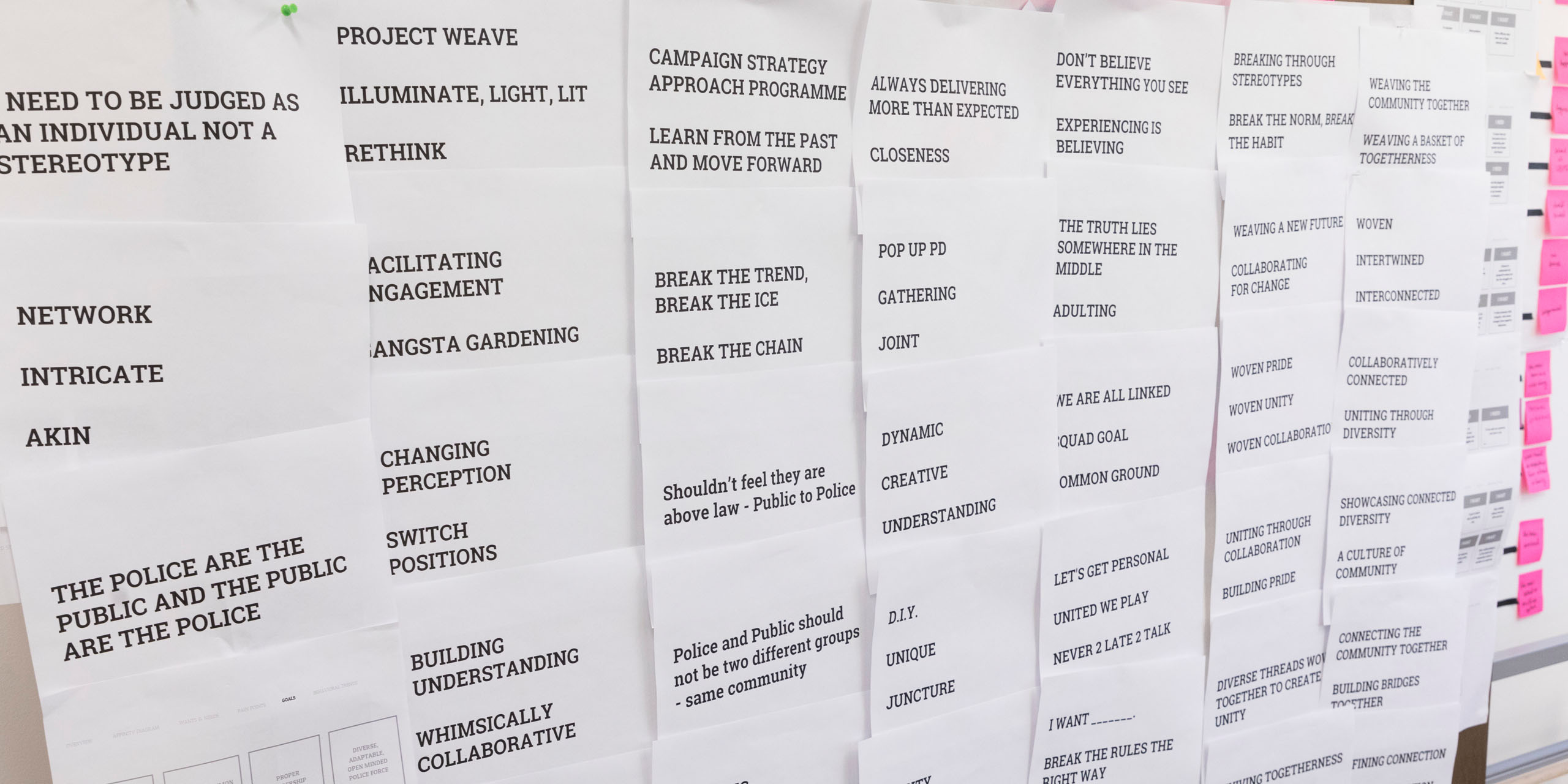
“The media language that people use these days to communicate–texting, emojis, symbols, Instagram images–is well represented in these concepts. People want snapshots of what is happening; little tidbits, especially the quotes on the posters, are really effective. Grab someone’s attention first; then when they question and wonder about it, they will delve more into that topic. I really enjoyed what the students have done and the concepts they have presented to engage our police department and the public.”
– Sheree Valdoria, Personnel Analyst, Long Beach Civil Service
Project Outcomes: Rethink/Reimagine LBPD
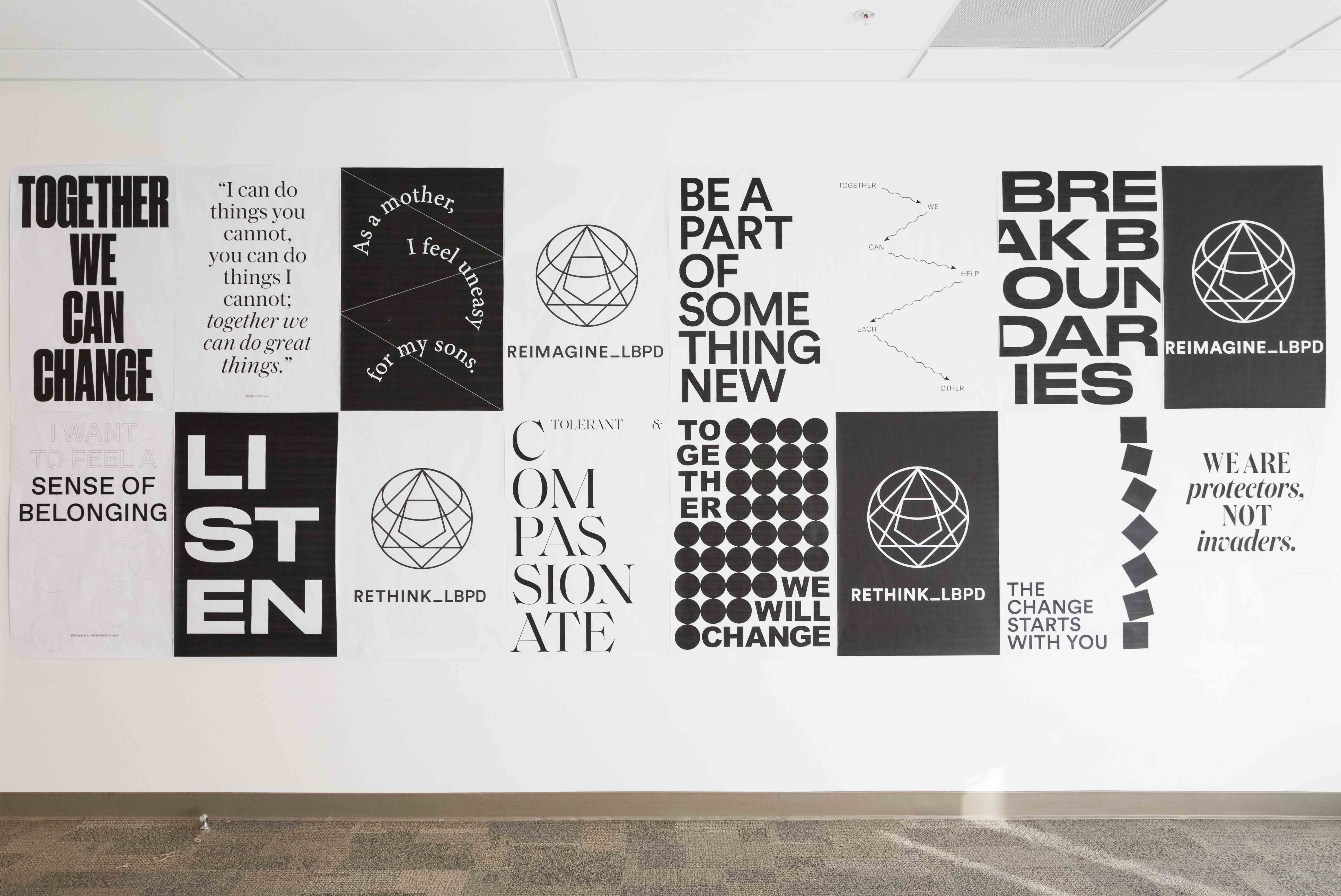 close
close
Branding Campaign
Read more
New graphic directions aim to create unifying messaging representing unity, trust and open communications between Long Beach citizens and law enforcement.
Symbolizing the diversity and unity of police officers and citizens, the new badge icon employs five geometric shapes, representing the physical layout of the four Long Beach communities and their connection to the LBPD. Shapes correspond to four Long Beach sections – North, South, East and West, along with the LBPD. These shapes were chosen for their underlying message: circle/harmony, square/strength, triangle/strong foundation, pentagon/completeness.
Additionally, a new recruiting logo, composed of two squares, reflects how the LBPD works to create positive change with the community. Inspired by the arrow symbol, the design represents moving forward together.
Posters and other graphics–presented in black and white text with bold eye-catching shapes–further demonstrates the connection the police department has with its citizenry to work together to police, monitor and care for the community as one united front. These posters can be placed in targeted high-volume community settings (bus stations, college campuses, parks, etc.) and imagery can be incorporated into merchandise such as tote bags, buttons and t-shirts.
 close
close
Backyard Long Beach
Read more
Inspired by the concept of an old-fashioned backyard party, this communal event will connect Long Beach neighbors to their local police officers in a casual and fun picnic-type party. With an ultimate goal of promoting recruitment and bringing together civilians and law enforcement, this food-centric event can be held four times a year in major parks in each of Long Beach’s four districts.
Specially designed, colored logos correspond to specific Long Beach districts.
The event will feature food and market stalls, and include favorite local restaurants.
Music on a live stage will feature local bands, LBPD bands and an open mic for upcoming new talent. Local artisans will display and sell their goods, and could lead workshops on their specific medium. A K-9 unit station will help educate the public.
Team-building activities will be a highlight of the event, with civilians and police officers working together on a giant Jenga, a tug-of-war competition, a pillow fight and more. Interactive installations will challenge participants with an obstacle course, and other physical tests of strength and stamina. Picnic-goers can engage in a photo booth, and pose with LBPD themed props along with a LBPD Ride-Along wall and a giant Long Beach photo sculpture.
Woven throughout the team-building activities will be information about the LBPD.
Wayfinding materials will include a printed map and modular signage that employs event iconography.
Event promotion will include print and digital marketing campaigns, a series of posters and flyers for outdoor applications along with heavy social media promotion that would target community influencers.
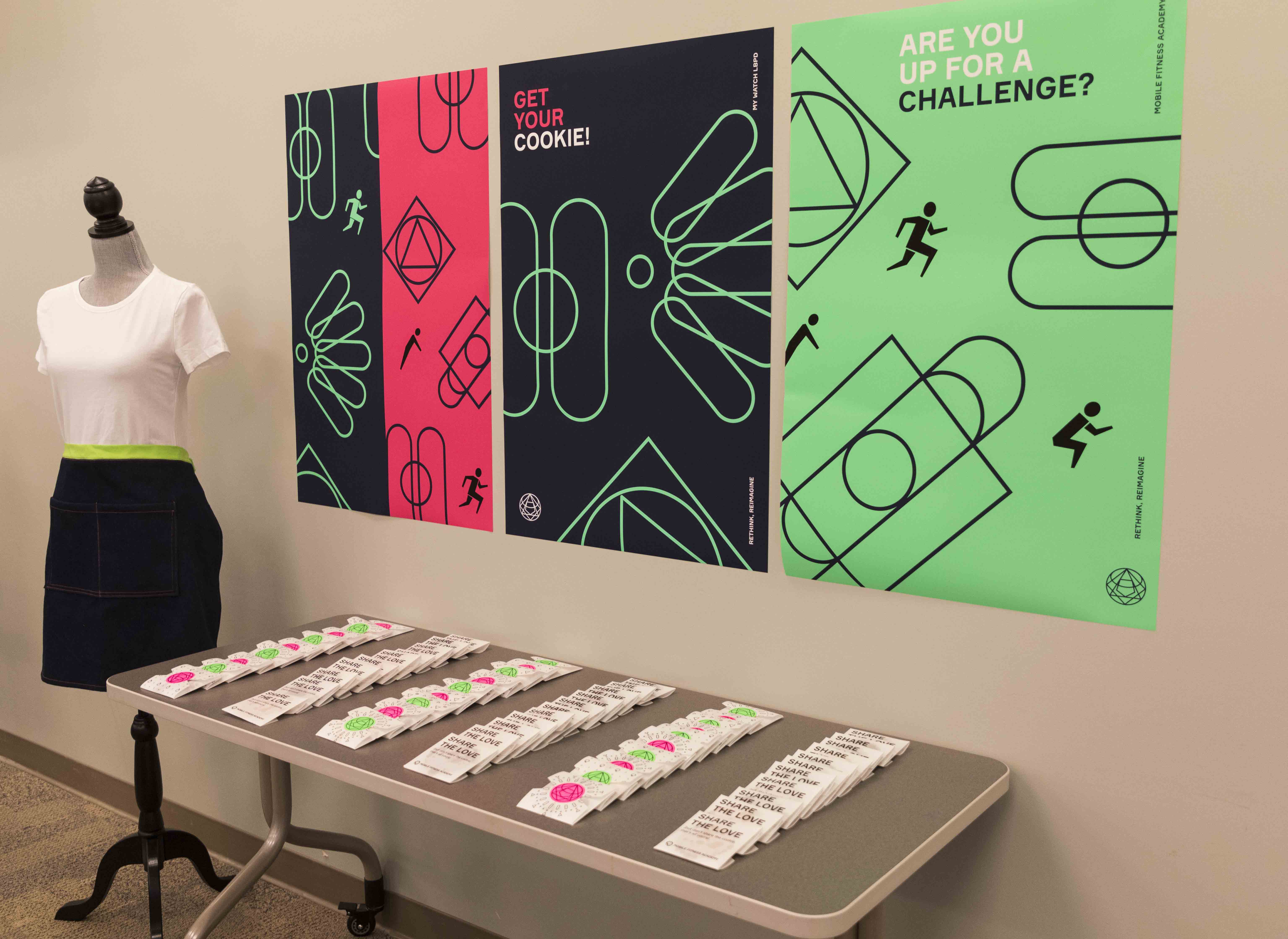 close
close
Mobile Fitness Academy
Read more
To increase interest in law enforcement as a career path for young people, and to promote an active healthy lifestyle, a specially-configured mobile fitness truck invites civilians to learn about the physical challenges needed to become a police officer, while testing their own physical abilities.
When successfully completing a particular physical challenge, participants will receive a cookie featuring the new LBPD badge icon. Cookie packaging can also contain messaging about recruitment, police life and more.
Because the academy is on wheels, the program can easily travel to different communities to spread awareness, and its message, in a fun and engaging manner.
The truck features a bright color scheme that incorporates identity iconography, representing the various participant challenges such as running, squats, push-ups, etc.
Cookies are stamped with logos and identity branding that feature victory medal imagery, and used to reward those that completed the challenge.
Participants can share their challenge results via social media platforms. They can also engage with an interactive mobile screen; to substitute their face for a police officer. This interaction further stresses opportunities for recruitment.
Additionally, participants can receive a deck of cards with various physical challenges and workouts that police cadets must master; participants are encouraged to see how they stack up physically to police officers. Cards can also present quick snippets of information about being a police officer.
Partnerships for this project would include neighborhood bakeries (cookies), local gyms (physical challenges) and community print shops (truck wrap, shirts, and card decks).
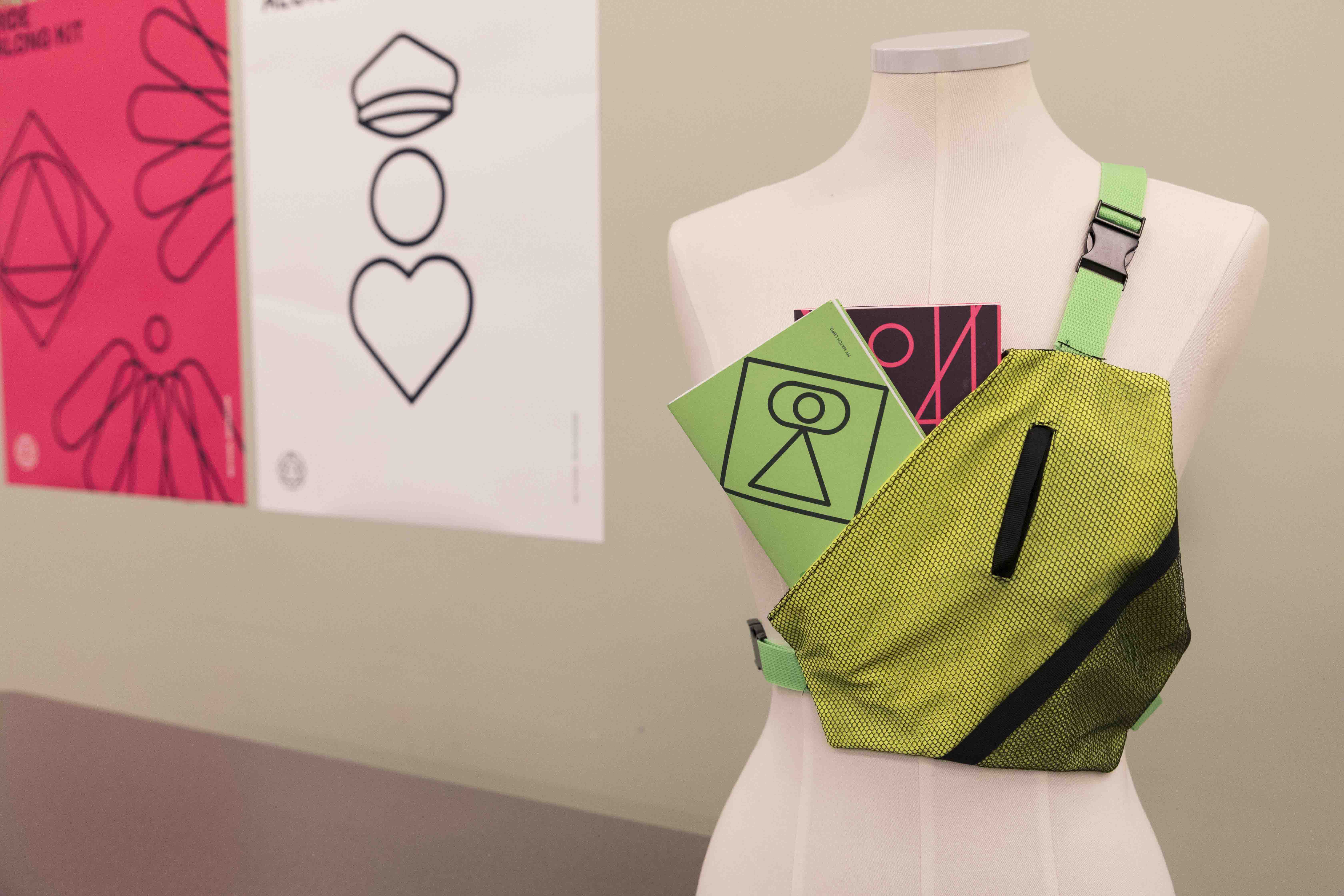 close
close
Ride-Along Kit
Read more
People who have participated in a police ride-along tend to have more empathy with law enforcement and the work police officers perform on a daily basis.
To further educate and reward civilians for participating on a police ride-along, these interactive kits contain a ride-along booklet and a personalized journal that are carried together in a utilitarian hands-free vest or fanny pack.
Both the booklet and journal incorporate the branding concepts and text iconography into an engaging colorful design. The booklet features basic, easy-to-read information about the LBPD with additional maps, uniform protocol, ride-along rules, as well as articles and upcoming police events.
With a disclaimer informing the rider not to record anything sensitive that is encountered during the ride-along, journals are personalized volumes that contain pages to write observations and notes. Participants are encouraged to share content about their ride-along experiences on their own social media platforms, which would garner additional empathy and positive insight about the work of police officers.
Community leaders and advocates with great influence would be targeted to participate in ride-alongs.
Possible partnerships with this concept would include outdoor clothing and gear retailers (vest/fanny pack) and local printers (booklets, journals).
Next Steps
Graphic Design student Alexia Chuck will be the Spring 2019 Designmatters Fellow with the Long Beach Police Department, and will work closely with the LBPD, Ty Drake (faculty) and the Designmatters team to implement some of the studio outcomes.
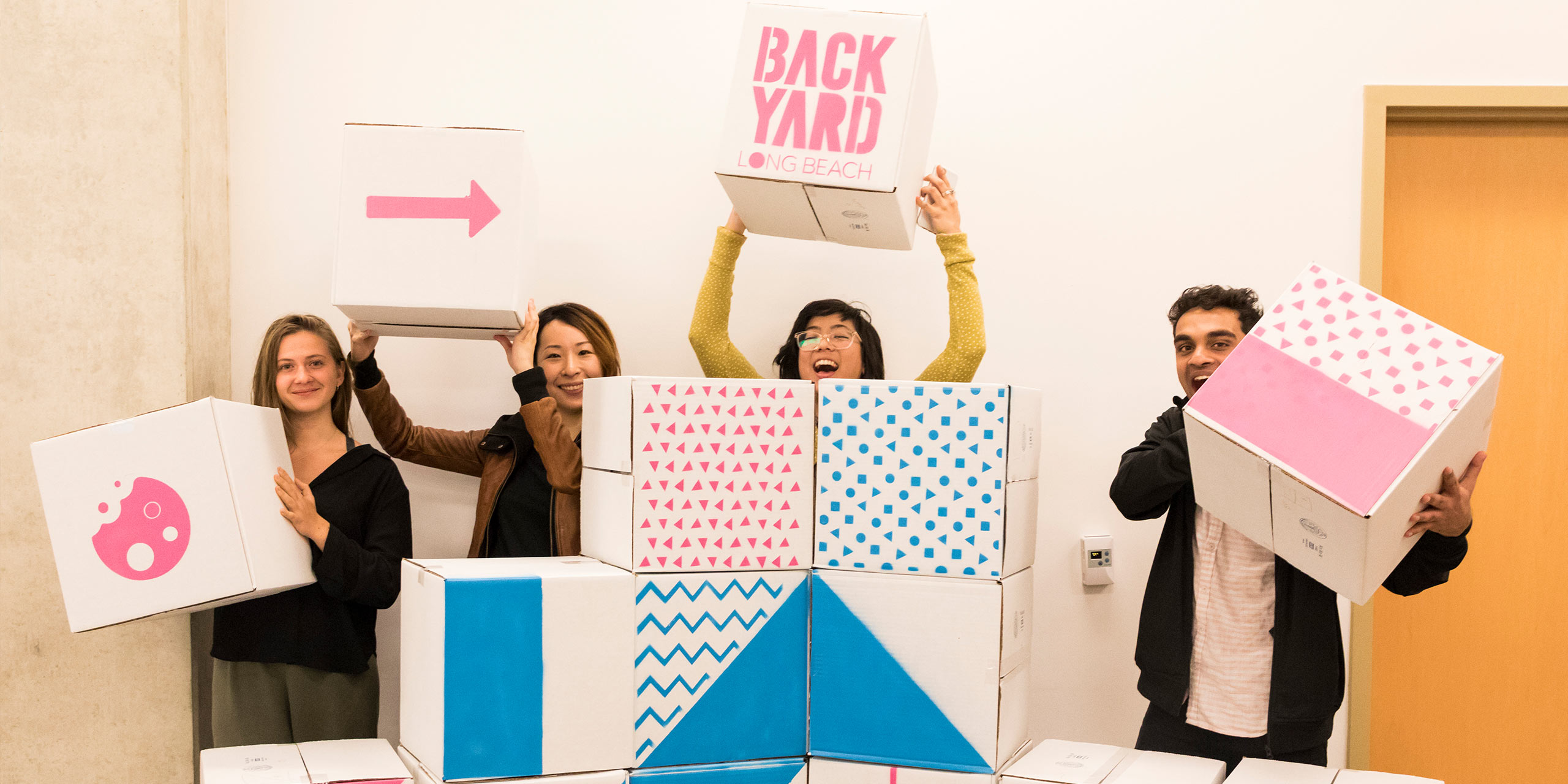
“I spend minutes, if not hours, trying to provide messaging that’s understandable for different aspects of our community. Today, I heard and saw a message conveyed in a matter of seconds. What takes me a possible hour-long presentation, the students brought to life in only 10 seconds.”
– Jason Lehman, LBPD Community Engagement Officer
“Every student should have a studio experience like this where they have to collaborate with other disciplines, and learn how to work together to solve a problem. Working with other majors, delegating responsibilities, being able to articulate and create a workable solution–this is what the real world is like, especially in the world of design.”
– Tyrone Drake, Faculty, Graphic Design
“What I love so much about ArtCenter students is that they are such high performers. They have a deep desire to move away from ego-based design to really care and empathize. These students had to discover the similarities between the Long Beach Police Department and the Long Beach community, and then find out how to bring them together. At the end of the day, our job as designers is to bring people together and to speak for people who can’t speak for themselves. This is our vocation, and we can do that with the power of design.”
– JonDelina Buckley, Faculty, Interaction Design
Press
- ArtCenter Students to Help Bridge Trust Between LB Police and Residents, coloradoboulevard.net, (March, 2018
- ArtCenter NEA Grant to Help Long Beach Police, ArtCenter (February, 2018)
- ArtCenter Project Aims at Building Mutual Trust Between Long Beach Police, Residents, Pasadena News Now, (February, 2018)
This project was made possible in part by support from the Kenneth T. & Eileen L. Norris Foundation.

